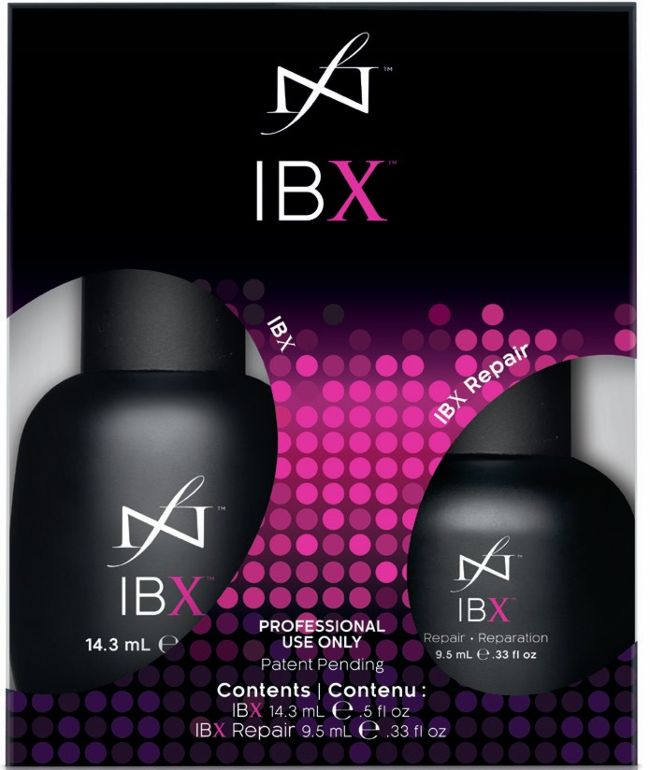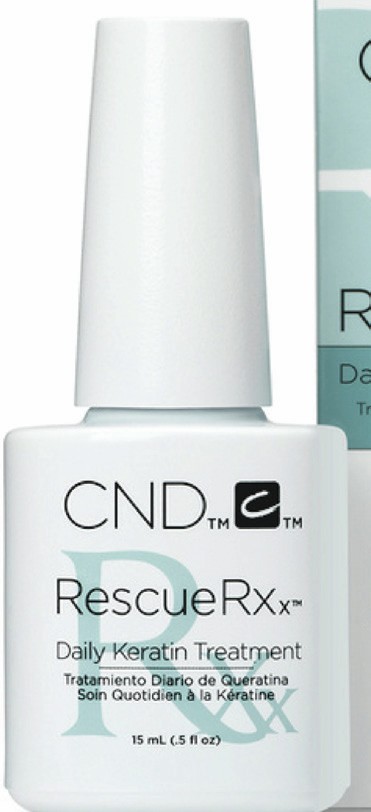EXPERT ADVICE
Nail SOS: Repairs & refunds
Scratch explores common causes & salon solutions to nail damage & the importance of having a clear policy in place for repairs
How does nail damage occur?
Physical causes of nail damage can include trauma from excessive force or impact, exposure to water and chemicals, and improper removal of overlays and enhancements.

Giulia Lal
“The most common cause of nail damage that I see at my nail desk is clients using their nails as tools. It’s so easily done, but putting pressure on nails can cause them to split and break,” explains Giulia Lal of TheNailStudio, Wolverhampton. “Damage can be avoided by using alternatives to nails to perform tasks, wearing gloves when cleaning and using cuticle oil daily. I give my clients advice on how to look after their nails, as good aftercare aids the longevity of the service.”

Yasmin Hodge
“Tasks that seem simple, such as peeling stickers and tape, can put the nails under stress and cause damage,” warns Yasmin Hodge of Wolverhampton business, Gels by Yas. “I also find that clients who neglect aftercare tend to struggle with dehydrated nails that split.”

Jaz Moger
“Other causes of nail damage include picking nail enhancements and leaving too much time between nail appointments, causing pressure on the nails that results in breaks,” says Salon System nail expert, Jaz Moger of Paint by Jaz, Sussex. “This can be avoided by making sure that clients book regular maintenance appointments and that enhancements or overlays are removed correctly by a professional.”
“It’s important to make your repair policy clear and remind clients of it at their appointment.”
“Nail damage happens through daily activities like washing hands, cleaning and showering, which break down keratin bonds,” shares Sarah Fairneny, vice president of OPI research & development. OPI has sought to support weak and damaged nails and combat everyday damage by developing Repair Mode, a product that can repair broken bonds from inside the nail. “Ulti-Plex technology penetrates into the nail, building bonds within the damaged keratin to restore and protect, similar to how Plex products are used in haircare,” Sarah continues. “With Repair Mode, users can experience their natural nails, restored to their natural condition in six days.”
Charging dilemmas
Offering repairs to clients takes up time in your diary that could be spent with other clients. Knowing when to offer a nail repair and how to determine who is at fault can be tricky to navigate, with some techs opting to fix chips or peeling enhancements for free within a specific timeframe, and others charging for a repair, irrespective of time since the appointment.

OPI Repair Mode
£18.90 + VAT/ RRP £29.90 www.opi.com “I charge for repairs, as I believe getting your nails done comes with the responsibility of good aftercare. When clients aren’t taking good care of their nails, it results in damage and breaks,” Giulia Lal explains. “I keep my price the same for repairs, as it generally takes the same amount of time to repair a nail break regardless of the length of time after the initial service.”
“My policy states that I will fix any chips or breaks within 48 hours of the initial service free of charge,” Yasmin Hodge shares. “However, after 48 hours, I charge £3 per nail to fix, as these breaks will likely have occurred due to neglecting aftercare.”
How to put policies in place
It’s important to make your repair policy clear and remind clients of it at their appointment. Consider displaying it on your website and social media pages, and print it out to display in your nail space within clients’ eyelines.
“I showcase my repair policy on my Instagram highlights,” shares Giulia Lal. “When clients message me to book in for a repair, I make them aware of the charge for the nail repair before the appointment to avoid any confusion.”
“I display my repair policy on my social media pages so it is readily accessible to potential and existing clients,” says Yasmin Hodge. “I stress the importance of aftercare to maintain the longevity of nails and retail cuticle oil. Clients leave each appointment with an aftercare card.”
Jaz Moger adds: “I advise all of my clients on a nail length that is appropriate to their lifestyle. This ensures there is no added stress or pressure that could lead to breaks. I recommend that they come back every two to three weeks for a manicure service and detail the correct aftercare for them to follow after the appointment. This includes daily use of cuticle oil, not using nails to pick labels or open cans, and wearing gloves for cleaning, washing up and when out in cold temperatures. I tell clients to file off any chips or breaks in the nail to prevent them from catching until their next appointment.”
“Tasks that seem simple, such as peeling stickers and tape, can put the nails under stress and cause damage.”
Louella Belle educator, Clare Hooson, uses the IBX System for natural nail repair services. She begins with gentle, thorough prep and cleansing, before applying a thin layer of IBX Repair to the nail plate. “Scrub the product in so it tucks under the delamination,” she says. “IBX Repair works like a double-sided sticky tape for the nail, holding the break together for added strength as it grows out.”

Clare Hooson

Clare Hooson shows damaged, peeling nails before and after treatment with the IBX System.

Keysie
from 85p inc VAT/RRP £1.25www.keysie.co/shop Save nails from damage with the Keysie, a retail-friendly item for salons that can be used for a range of nail-saving tasks, such as opening cans, keyrings and parcels, lifting photo frame flaps, peeling stickers and tape, opening plastic film packaging and more. What’s more, the Keysie can be personalised with your business logo.

IBX Duo Pack
£55 + VATwww.louellabelle.co.uk Best used as a duo, this two-part system consists of IBX Repair and Strengthen to work together as a protective shield for broken, weak or damaged nails.

CND Rescue RXx™
£10.95 + VATwww.sweetsquared.com This daily keratin treatment helps repair damaged nails that have been impacted by mechanical force and environmental effects. It uses the power of keratin protein and conditioning jojoba oil. Fixing broken nails
Giulia Lal shows the outcome of repairing a broken nail using builder gel. First, she removed the existing gel polish overlay, before gently prepping the damaged nail plate and enhancing with builder gel to match the length of the other nails.
“I enjoy using builder gel for repairs as it gives the nail additional strength to protect it from further damage,” she shares. “Builder gel also offers a natural-looking finish. It’s particularly useful when a client has long natural nails and one breaks, because the product can add a short amount of length.”
“Damage can be avoided by using alternatives to nails to perform tasks, wearing gloves when cleaning and using cuticle oil daily.”
EXPERT ADVICE
In a blog post for education platform, Nail Knowledge, hand healthcare specialist, Tracy Anne Shelverton, comments: “As frustrating as split nails can be to deal with, with the right treatment, they can be repaired and prevented from happening again. DIY efforts such as nail wraps and tea bags can provide a quick fix, but professional treatments such as short, flexible gel nail extensions, L&P acrylic overlays and manicures can provide long-term solutions.”